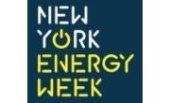 On Tuesday I had the pleasure of attending Redefining US Energy Security for the 21st Century as part of New York Energy Week. The panel was composed of self described “Energy Warriors” Vice Admiral Lee Gunn (US Navy, Ret.), Brigadier General Steven M. Anderson (US Army, Ret.), and Brigadier General Stephen A. Cheney (US Marine Corps, Ret.) and offered insight into the massive amount of energy required by the DOD as well as their goals to reduce energy demand without compromising operational efficiency. Here are some interesting facts:
On Tuesday I had the pleasure of attending Redefining US Energy Security for the 21st Century as part of New York Energy Week. The panel was composed of self described “Energy Warriors” Vice Admiral Lee Gunn (US Navy, Ret.), Brigadier General Steven M. Anderson (US Army, Ret.), and Brigadier General Stephen A. Cheney (US Marine Corps, Ret.) and offered insight into the massive amount of energy required by the DOD as well as their goals to reduce energy demand without compromising operational efficiency. Here are some interesting facts:
- The US military is the largest organizational user of petroleum in the world consuming around 120m barrels per year at a cost of about $17 billion.
- Petroleum accounts for 71% of the DOD’s energy consumption by source; electricity ranks second at 11%, natural gas third at 8%.
- Since 2005, DOD’s petroleum use has deceased 4% but spending on petroleum increased 381% in real terms.
- After taking into account the hidden costs of personnel and assets required to move, store and protect fuel from the supplier to the point of use, one gallon of fuel can cost up to $50.
- One project that used spray foam insulation on tents in Iraq reduced cooling costs by 75% and resulted in savings of $3.6 per day! The original contract for $95 million saves up to $1 billion dollars annually and keeps 11,000 fuel trucks off the road. Think about the reduced risk to our soldiers who would otherwise have to protect those convoys as the fuel makes its way from its origin to its final destination.
All this adds up to a massive energy bill and a lot of time and resources dedicated fueling the operation rather than the operation itself. The diversion of resources, vulnerability of supply chains and reduced mobility of combat forces make our military’s reliance on fossil fuels a national security issue as much as a financial one. Each and every branch of the military understands this fact and has taken steps to increase their energy efficiency and reduce their demand. However, the opportunities are endless.
As I stated in an earlier article, the DOD should leverage its purchasing power to drive cost reductions in advanced clean energy products. In addition to economies of scale, the DOD would also provide real world testing of new technologies so they can be measured and verified and eventually reach commercialization.
Furthermore, as energy efficiency contributes to organizational effectiveness, there should be a top down approach where commanders are held accountable for reaching their energy reduction goals.
It is well established that our addiction to fossil fuels poses a national security risk. It was especially motivating hearing the alarm being sounded by former members of the DOD.













